
Our Top 10 Best Algae-Eating Fish for Freshwater Tanks
If you’ve ever kept an aquarium, you’ve probably encountered the number one nuisance for many fishkeepers—algae. While a little algae isn’t necessarily harmful to your tank’s health, certain types like brown algae, hair algae, and black beard algae ,can quickly take over and turn your beautiful underwater setup into an unsightly mess
Keeping algae under control is one of the biggest challenges in maintaining a healthy and beautiful aquarium. While most omnivorous fish will nibble on algae as part of their natural diet, a persistent bloom often needs more help. That’s where dedicated algae-eating fish come in!
Algae-eating fish can be a great addition to your aquarium, helping to keep it clean and free from excessive algae growth. By introducing a few species that naturally graze on algae, you create an easy and effective way to prevent buildup before it becomes a problem—keeping your tank looking fresh and healthy.
If you’re already dealing with an algae issue, start by identifying the type of algae in your aquarium and then choose the fish best suited to tackle it. Remember, not every algae eater consumes every type of algae!
Our Top 10 Best Algae-Eating Fish
Choosing the right algae eaters for your aquarium can be overwhelming with so many options available. To make it easier, we’ve put together a list of ten of the best freshwater algae-eating fish, including their care needs and the types of algae they excel at controlling.
Let’s dive in …
1. Plecos
Adult Size: 6 – 24 inches (dependant on variety)
Recommended Tank Size: 100L - 500L +
Temperature: 22–28°C
Best At Eating: Soft green algae, brown algae (diatoms), and biofilm



Plecos are among the most popular algae eaters in the aquarium hobby, and for good reason! With hundreds of beautiful varieties to choose from, there’s a Pleco for nearly every setup. However, it’s important to choose carefully, different species grow to very different sizes, and some can become quite large.
One of our favourites is the Bristlenose Pleco (Ancistrus). They stay relatively small, usually reaching around 5–6 inches as adults, making them perfect for community aquariums. In contrast, larger species like Sailfin Plecos are better suited to big tanks where they have plenty of space to roam.
Another excellent option is the Rubber Lip (or Bulldog) Pleco. These hardy fish are efficient algae eaters and remain compact, making them great for medium-sized aquariums.
Keep in mind that juvenile Plecos tend to graze on algae much more actively than adults. As they grow—or if you keep several—you’ll need to supplement their diet with algae wafers, Pleco Sticks, or vegetables (they love cucumber and courgette!) to ensure they’re getting proper nutrition. Even in tanks with minimal algae, Plecos still need to be fed regularly, just like any other fish in your aquarium.
2. Otocinclus (Otos)
Adult Size: 1.5–2 inches
Recommended Tank Size: 20L +
Temperature: 24 – 26°C
Best At Eating: Green spot algae, brown algae, soft film algae
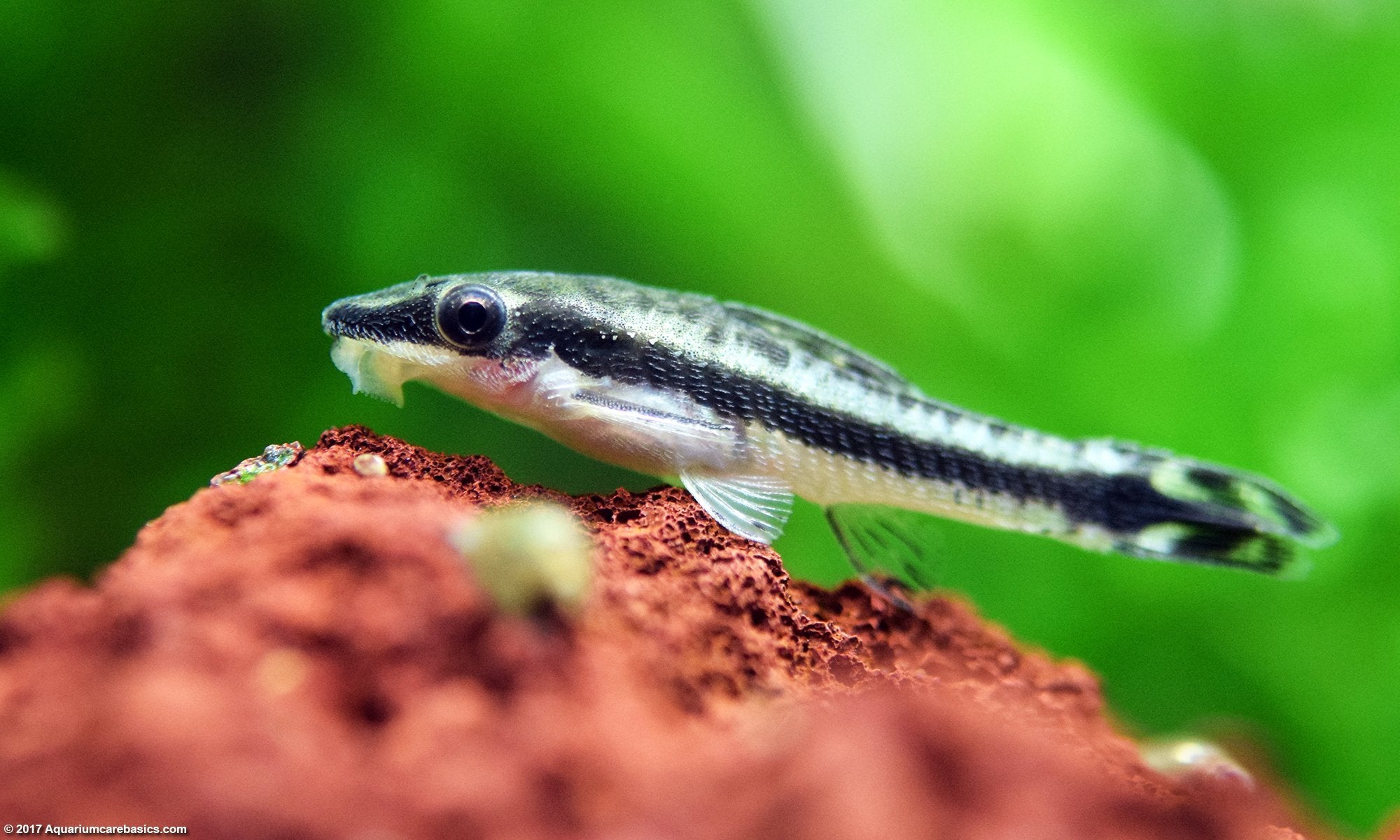

These small, peaceful catfish are ideal for small aquariums and planted tanks, making them one of our top recommendations for nano setups. Despite their tiny size, Otocinclus catfish are hardworking algae eaters, constantly grazing on soft algae and biofilm without producing much waste, which helps keep water quality high.
Otos are social creatures and thrive when kept in groups of at least 3–6, so they feel secure and display their natural behaviours. They are also gentle on plants, leaving delicate leaves untouched while efficiently cleaning rocks, driftwood, and aquarium glass. With their calm temperament and impressive cleaning abilities, Otos are a favourite among aquarists looking for a low-maintenance, tank-friendly algae solution.
3. Reticulated Hillstream Loach
Adult Size: 2–3 inches
Recommended Tank Size: 30L +
Temperature: 20–24°C
Best At Eating: Soft green algae, diatoms
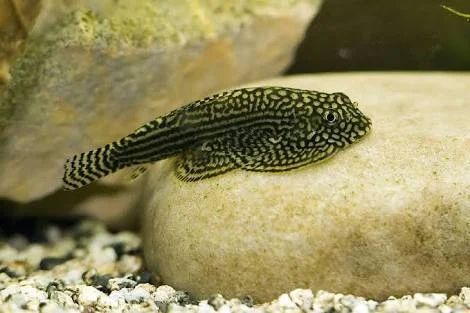
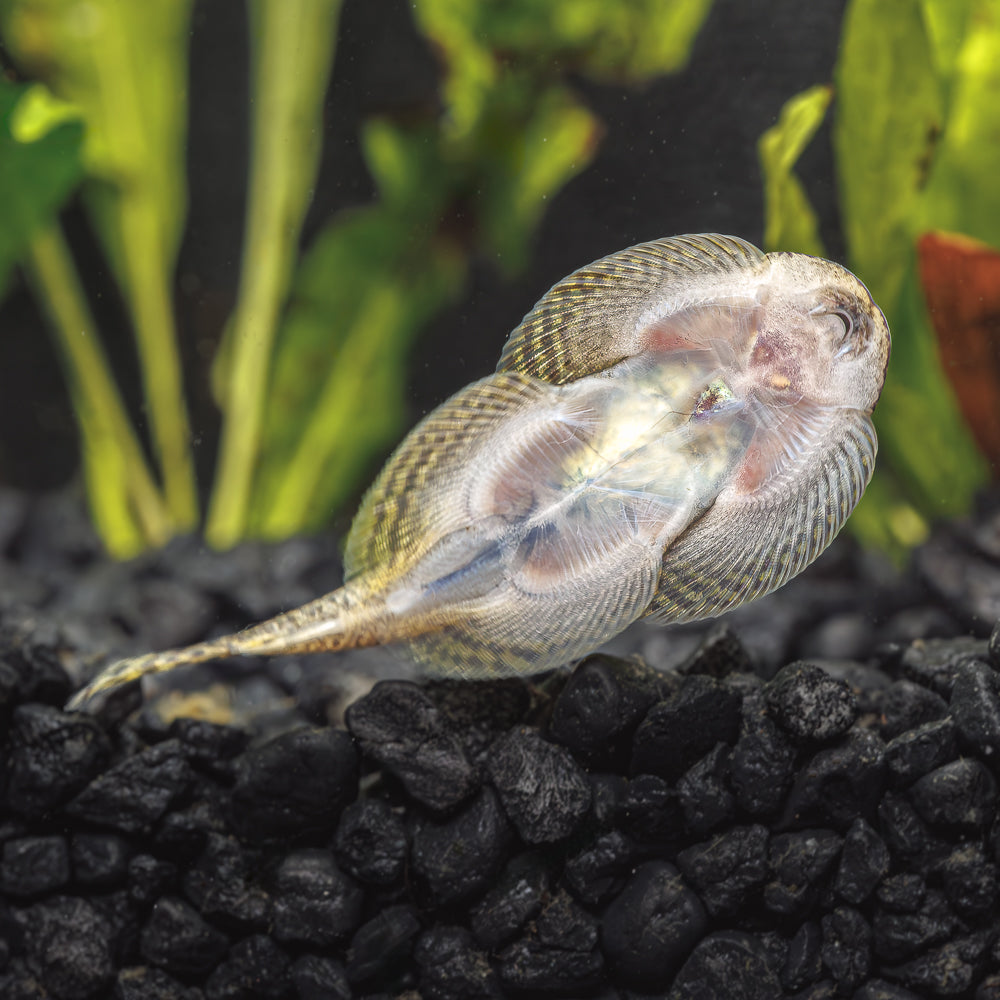
Hillstream loaches are another fantastic choice for nano and small aquariums. Their unique, flattened “sucker” bodies allow them to cling effortlessly to rocks, driftwood, and aquarium glass, even in high-flow tanks. This makes them excellent at cleaning smooth surfaces and flat décor, helping keep your tank looking pristine.
These loaches thrive in both temperate and tropical setups, but they do require well-oxygenated water to stay healthy. If you’re planning to add a Hillstream loach to your aquarium, make sure there is plenty of surface movement and good water circulation. When in doubt, adding an air pump can help maintain the oxygen levels they need to thrive.
4. Garra Rufa (Doctor Fish)
Adult Size: 3–4 inches
Recommended Tank Size: 50L +
Temperature: 16–28°C
Best At Eating: Green algae, soft film algae
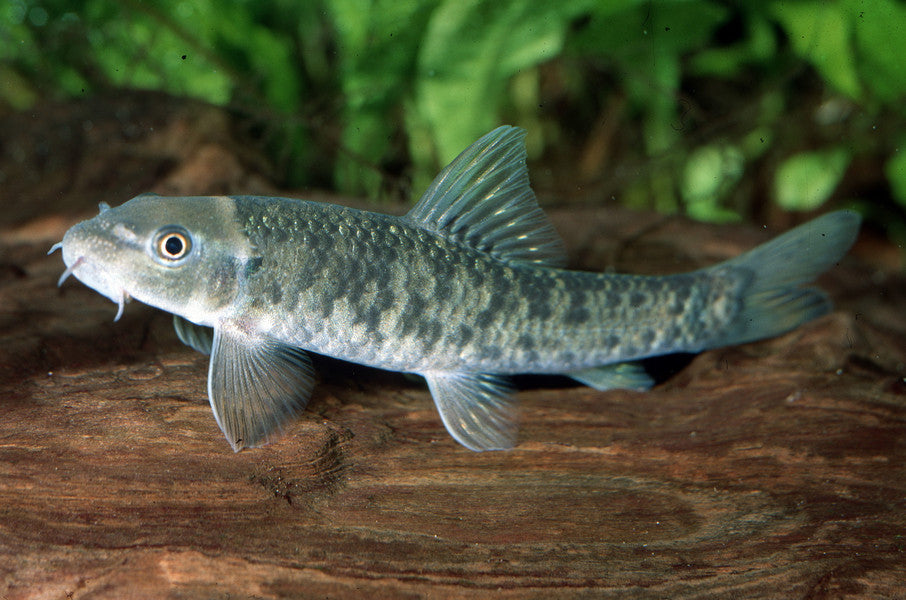

Garra is a genus of fish in the Cyprinidae family, and many species are popular in aquariums for their excellent algae-eating abilities. One of the most commonly kept species is Garra rufa, also known as the “doctor fish” or “red garra.” While they are famously known for their spa use, nibbling on dead skin (which we don’t recommend in home aquariums), Garra rufa are fantastic tank cleaners.
These fish are highly active and do best in small groups, constantly grazing on algae, leftover food, and biofilm. They are not picky eaters and can adapt to a wide range of aquarium setups, thriving in both tropical and temperate environments. Garra rufa are also peaceful community fish and generally get along well with other species. To keep them healthy and active, ensure your tank has a good level of oxygen and moderate water flow, which encourages their natural grazing behavior.
5. Panda Garra (Garra flavatra)
Adult Size: 2–3 inches
Recommended Tank Size: 50L +
Temperature: 22–26°C
Best At Eating: Soft green algae, biofilm algae



While technically another type of Garra, Panda Garras deserve their own spot on our list. These striking little fish share similar care requirements to Garra Rufa, but they stay smaller, making them ideal for medium and even smaller community tanks.
Panda Garras are active, personable, and constantly on the move, grazing on algae throughout the tank. While they are excellent at controlling algae, they also benefit from supplemental foods such as bottom feeder pellets or algae wafers to ensure they get complete nutrition.
These fish thrive in tanks with good water movement and well-oxygenated water, which supports their active lifestyle. Their peaceful nature and manageable size make them a great choice for community setups, where they add both charm and functionality as diligent algae cleaners.
6. Siamese Algae Eater (Crossocheilus oblongus)
Adult Size: 5–6 inches
Recommended Tank Size: 120L +
Temperature: 24–26°C
Best At Eating: Black beard algae (BBA), hair algae, green algae


Often referred to as SAE (Siamese Algae Eaters), these loaches are one of the few fish that will reliably eat black beard algae, making them a favourite among aquarium enthusiasts. Active, hardy, and constantly on the move, SAEs thrive in tropical community tanks and are excellent algae grazers overall.
If you’re considering adding them to tackle a black beard algae outbreak, it’s important not to confuse them with similar species, such as Flying Foxes, which are less effective at consuming tougher algae types. Siamese Algae Eaters are a dependable choice for keeping stubborn algae under control while remaining compatible with most community fish.
7. Flying Fox (Epalzeorhynchos kalopterus)
Adult Size: 5–6 inches
Recommended Tank Size: 100L +
Temperature: 24–26°C
Best At Eating: Green algae, soft film algae
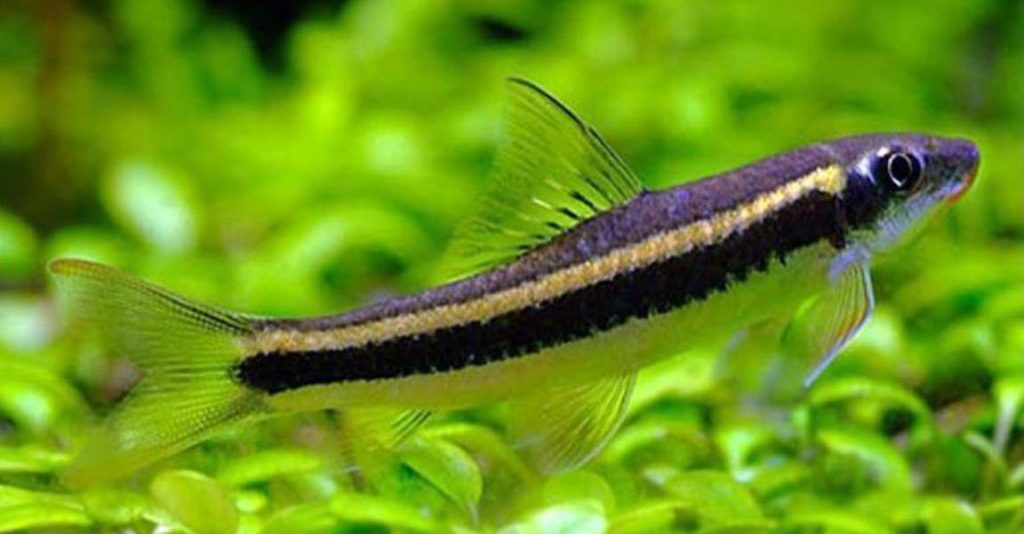
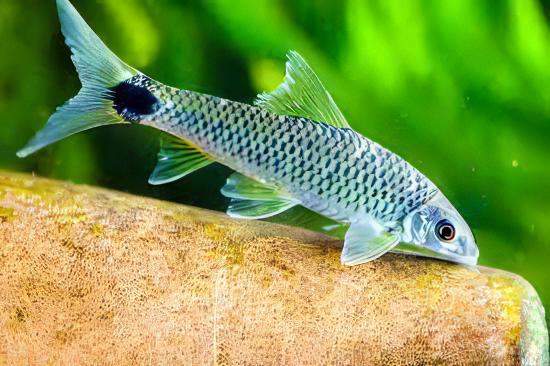
Sleek, fast, and full of personality, the Flying Fox is a striking bottom-dweller, instantly recognizable by its bold black and gold stripes. A talented algae grazer with plenty of attitude, it’s a great addition to larger community tanks.
While Flying Foxes eat a moderate amount of algae, they don’t match the appetite of the Simaese Algae Eater and are ineffective against beard or red algae. Juveniles are the most enthusiastic grazers, but adults may lose interest in algae and prefer pellets or flakes.
Similar to Siamese Algae Eaters, Flying Foxes tend to be slightly more territorial. They are also available as Silver Flying Foxes, which lack the black line and have a net-like body pattern. To prevent territorial aggression, it’s generally best to keep them singly, or provide ample space if keeping a small group.
8. Chinese Algae Eater / Gold Loach (Gyrinocheilus aymonieri)
Adult Size: Up to 10 inches
Recommended Tank Size: 150L +
Temperature: 23–27°C
Best At Eating: Soft algae, diatoms
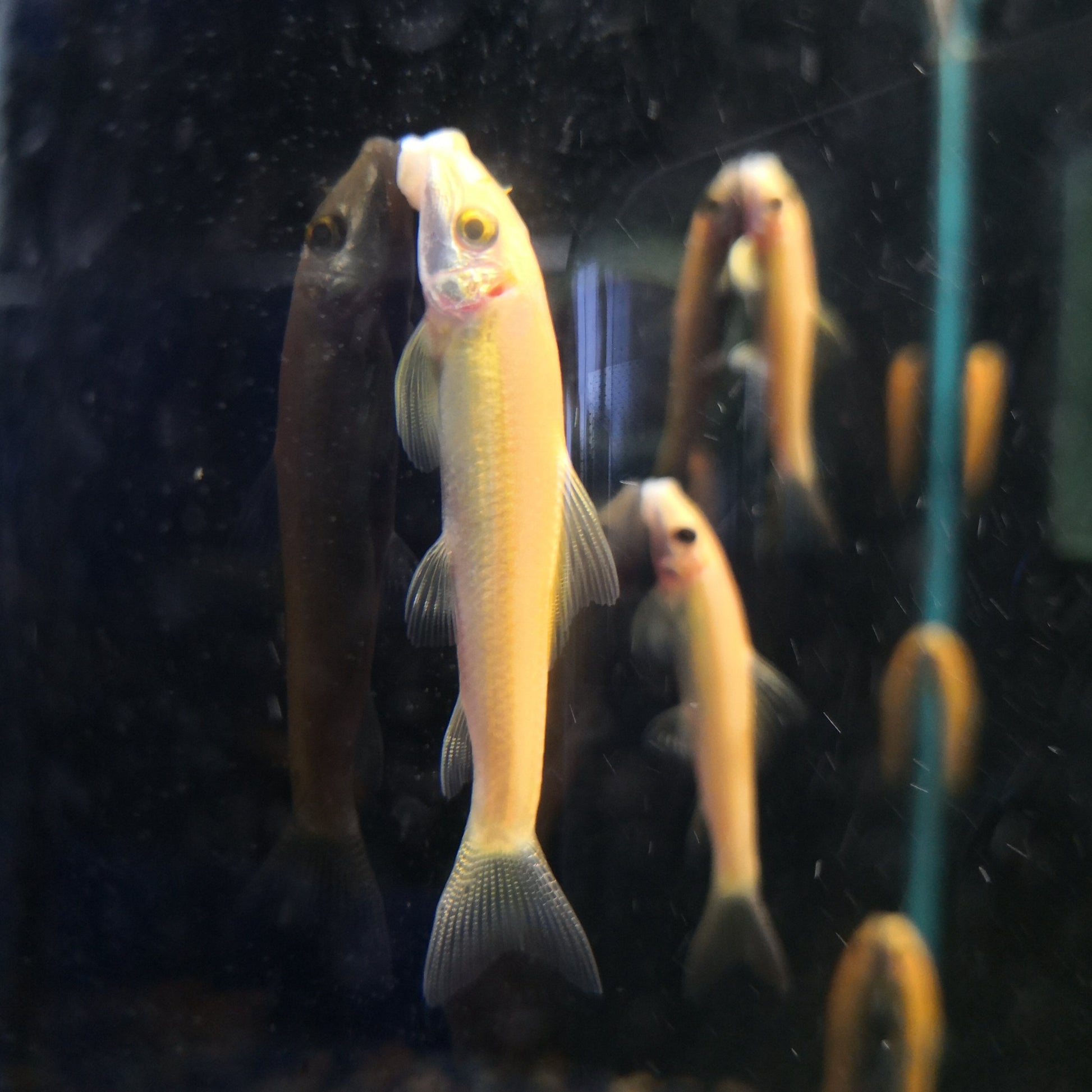
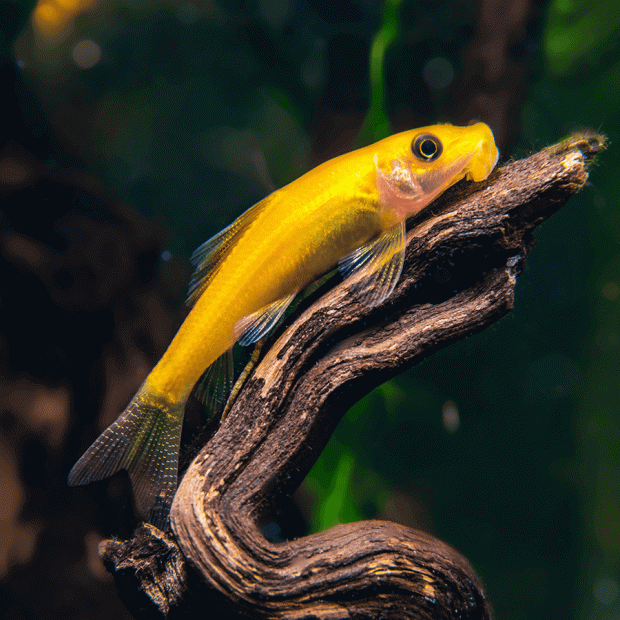

Another species often mistaken for the Siamese Algae Eater due to its similar wild colouring, the Chinese Algae Eater (also commonly known as the Gold Loach) can also be found in a striking golden variety. These fish can grow almost twice as large as their Siamese counterparts.
They’re excellent algae grazers when young, but as they mature, they tend to eat less algae and may become more territorial or aggressive. Because of this, they’re best suited to larger aquariums with semi-aggressive tank mates such as cichlids.
That said, it’s hard to find a more efficient algae eater for big tanks—thanks to their powerful suckermouth, Chinese Algae Eaters are experts at cleaning plants, rocks, driftwood, and other surfaces, making them one of the best options for large-scale algae control.
9. Farlowella Catfish (Whiptail / Twig Catfish)
Adult Size: 6–8 inches
Recommended Tank Size: 100L +
Temperature: 24–27°C
Best At Eating: Soft algae, biofilm

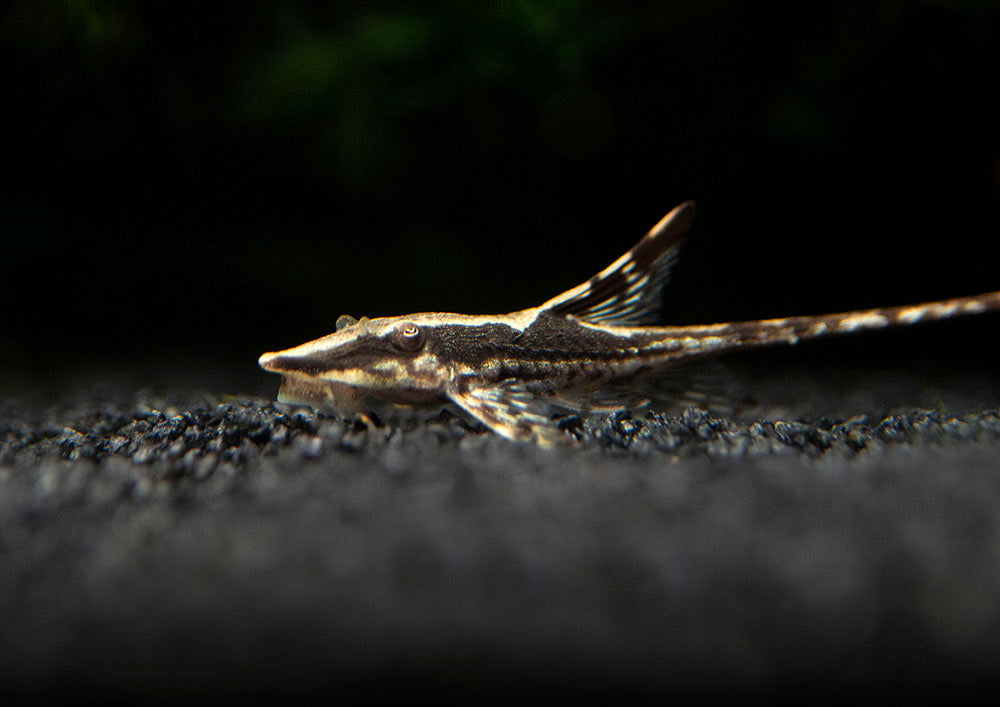
Farlowella Catfish get their name from their twig-like appearance and are often known as whiptail or twig catfish. These slender, stick-shaped catfish are peaceful by nature and excellent at cleaning driftwood and plant leaves. The uniquely shaped catfish can add real character and visual appeal to your aquarium, making them a fascinating addition to any setup.
They thrive in stable water conditions and do best with calm, non-aggressive tankmates. Farlowella are best kept in pairs or small groups if the aquarium provides enough space. Their long, thin bodies make them a great choice for tropical community tanks with small to medium-sized peaceful fish.
Although they will graze on algae throughout the tank, their diet should be supplemented with sinking catfish pellets, algae wafers, and other suitable foods. Farlowella catfish thrive in heavily planted aquariums or tanks with plenty of natural décor such as rocks, driftwood, and plants, which help mimic their natural habitat and provide hiding spots. They can be quite shy and prefer subdued lighting or tanks with areas where they are not constantly exposed.
10. American Flag Fish (Jordanella floridae)
Adult Size: 2.5 inches
Recommended Tank Size: 90L +
Temperature: 18–26°C
Best At Eating: Hair algae, filamentous algae


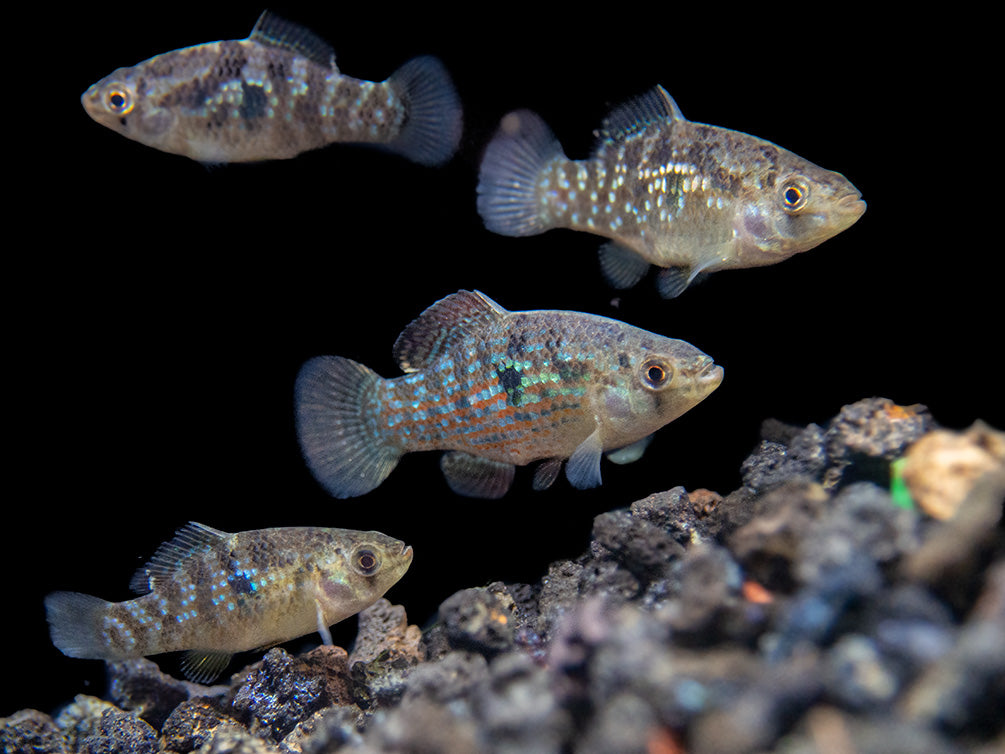
These strikingly colourful fish are a small species of killifish that are excellent at controlling hair algae. Males can become territorial during breeding, so monitor for signs of aggression in smaller tanks. Generally, they are peaceful community fish but may nip at species with long fins, such as guppies.
These fish are very hardy and adaptable, thriving in a wide range of environments. They can tolerate various temperatures and pH levels, making them ideal for both temperate and tropical setups.
Not picky eaters, they will happily consume most foods available to them. As constant grazers, they’re a great addition to tanks dealing with hair or filamentous algae, helping to keep algae growth under control. To ensure they stay healthy and well-fed, offer a balanced diet of flakes or pellets along with occasional treats like frozen bloodworms, mosquito larvae, or brine shrimp. A varied diet will not only keep them thriving but also help enhance their beautiful colours.
Special Mention – Snails & Shrimp
While this list highlights our top 10 fish that are best at controlling algae, in some aquariums adding fish simply isn’t an option. That said, it would be remiss not to give a special mention to shrimp and snails. If fish aren’t suitable or you’d like some extra help, these invertebrates make excellent tank cleaners and can be a great addition to your aquarium maintenance team;
Cherry Shrimp (Caridina & Neocaridina)
These vibrant shrimp are fantastic at cleaning up soft green algae, biofilm, and leftover food. They’re small, peaceful, and incredibly easy to breed in a stable tank, making them perfect for planted aquariums and nano setups. These shrimp can be found in wide range of colours and patterns, so youhave plenrty of options to choose from!


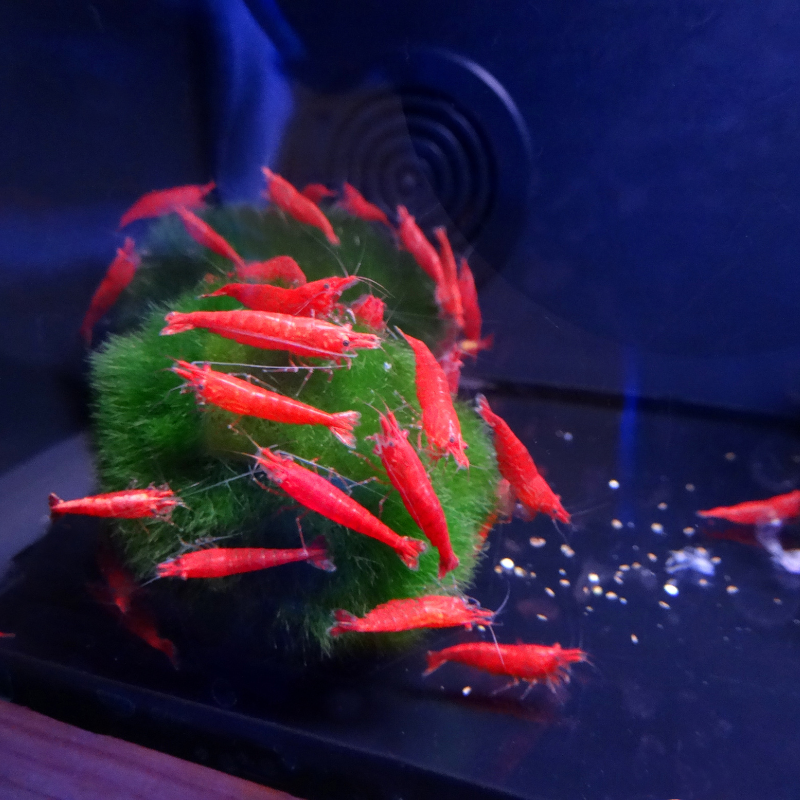
Amano Shrimp
Larger and more active than Cherry Shrimp, Amanos are true workhorses when it comes to controlling hair algae and cleaning up uneaten food. They’re hardy, long-lived, and excellent team players in community tanks, constantly grazing and keeping surfaces spotless.

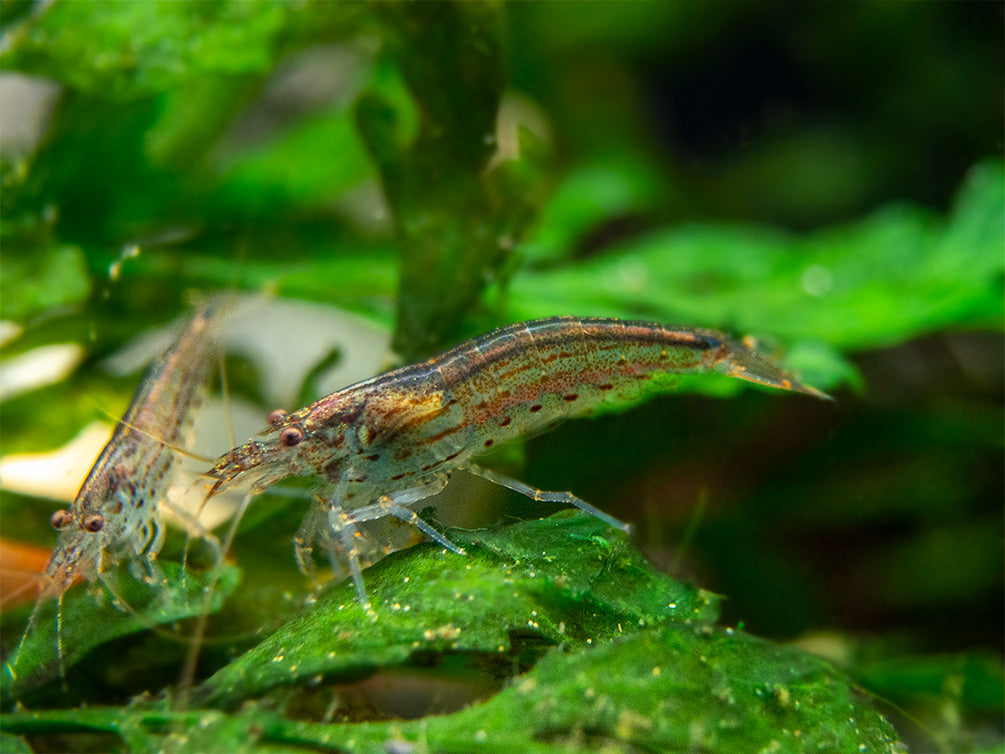

Nerite Snails
Known as some of the best algae eaters available, Nerite snails are experts at cleaning glass, rocks, and decorations. A big advantage is that they won’t reproduce in freshwater, so you won’t have to worry about overpopulation. They’re ideal for anyone who wants a clean tank with minimal maintenance.
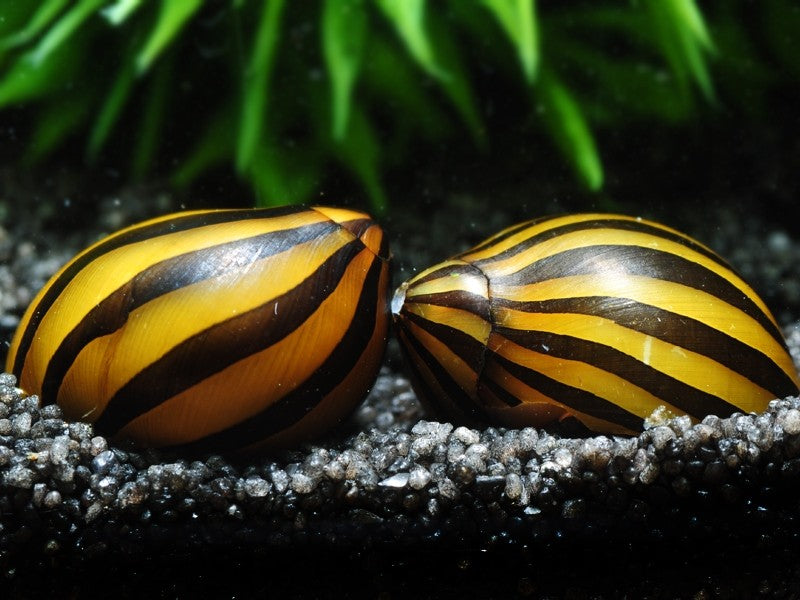

Ramshorn Snails
Recognizable by their distinctive coiled shells, Ramshorn snails feed on film algae, leftover food, and decaying plant matter. They help maintain a healthy balance in the tank by breaking down organic waste and are excellent for planted or community aquariums.
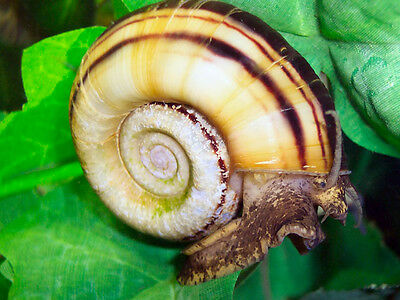


Still unsure which algae eater is best suited for you and your aquarium? Why not visit us and explore our wide selection of fish in-store? Our friendly and knowledgeable staff are always happy to offer advice and help you choose the perfect algae-eating species for your setup. Alternatively, feel free to give us a call with any questions you may have — we’re always here to help!
Can Algae Eaters Survive on Just Algae?
Not really. While algae is a natural part of their diet, most species need additional foods like algae wafers, blanched vegetables (zucchini, cucumber, spinach), and protein sources such as sinking pellets or catfish pellets. A varied diet keeps them healthy and ensures consistent algae control.
How Else Can I Get Rid of Algae?
Algae control is all about balance , not just adding algae eaters. Here are a few helpful tips to keep algae under control in your aquarium:
-
Limit excess light (6–8 hours per day) – Use a timer to maintain a consistent lighting schedule. In planted tanks, this helps prevent overexposure, while in tanks without live plants, you can keep lights off when there’s enough ambient light in the room. Remember: more light = more algae!
-
Avoid overfeeding – Leftover food breaks down and releases nutrients that fuel algae growth. Overfeeding can also disrupt the natural cycle of the tank, causing spikes in ammonia, nitrite, and nitrate , all of which algae thrive on. Feed sparingly and test your water regularly to ensure your parameters stay stable.
-
Perform regular water changes – Regular partial water changes help remove excess nutrients before they can feed algae. If nutrients build up and aren’t being absorbed by plants, they’ll simply fuel algae growth instead. Keeping up with routine maintenance is one of the easiest and most effective ways to prevent algae problems.
-
Add live plants – Live plants compete directly with algae for nutrients and light. The healthier and faster your plants grow, the less opportunity algae has to take over. A well-planted tank not only looks beautiful but also naturally helps keep algae in check.
-
Chemical treatments – While we always recommend addressing algae naturally first, chemical treatments can be useful if algae continues to be a persistent issue. These products should be used carefully and only after trying natural methods, as algae itself isn’t harmful, just unsightly and frustrating when it becomes excessive.
Recommended Treatments
There are many products available on the market designed to target algae problems in aquariums. Before choosing a treatment, it’s important to first identify the specific type of algae you’re dealing with and select a product that’s best suited for that issue. We recommend the following solutions for common algae problems:
Easy-Life Blue Exit Algae Treatment – An effective solution that targets a wide range of algae types. This intensive 5-day treatment can also be used at a lower dosage as a preventative measure. Ideal for tackling persistent algae problems.
Interpet Anti-Hair Algae – Specifically formulated to target hair algae and other filamentous types. It works by addressing the root causes behind excessive algae growth, helping to restore balance in your aquarium.
eSHa Protalon-707 – A great all-round algae treatment that targets multiple types of algae. It’s particularly effective against suspended algae, which causes green, cloudy water.
NT Labs Algae Gone – Designed to treat fine particle algae, this treatment works by binding tiny algae particles together so they can be trapped by your filter and removed from the aquarium. Perfect for restoring water clarity.
Final Thoughts
Algae-eating fish and invertebrates are invaluable allies in keeping your freshwater aquarium clean, healthy, and looking its best. From hardworking Plecos that scour your tank for stubborn algae, to a peaceful school of Otocinclus that delicately graze on plant leaves, and efficient Amano Shrimp that tirelessly pick at every surface each species brings its own unique strengths. By choosing the right combination of algae eaters for your setup, you can maintain a beautifully balanced, crystal-clear aquarium with minimal effort.
If you’re unsure which algae eater is the best fit for your tank, visit us in-store or get in touch with our team today. Our knowledgeable staff will be happy to recommend the perfect fish or invertebrates to suit your aquarium’s size, setup, and community, helping you keep your underwater world clean and thriving.
For more information and advice on aquatics, check out the rest of our blogs…
Understanding The Nitrogen Cycle | Can I Use Tap Water In My Aquarium? | Understanding Your Aquarium Water